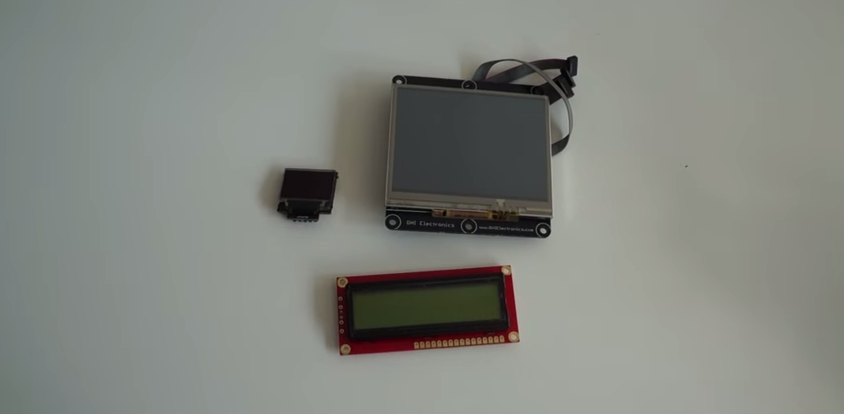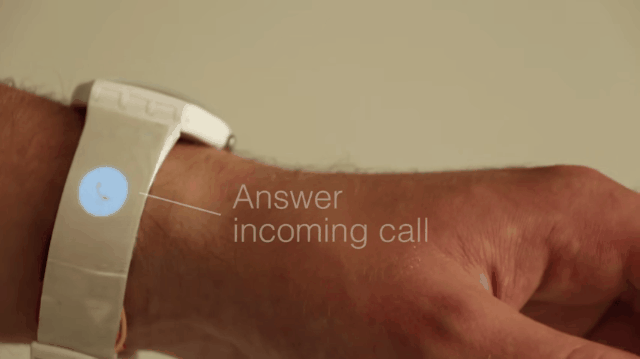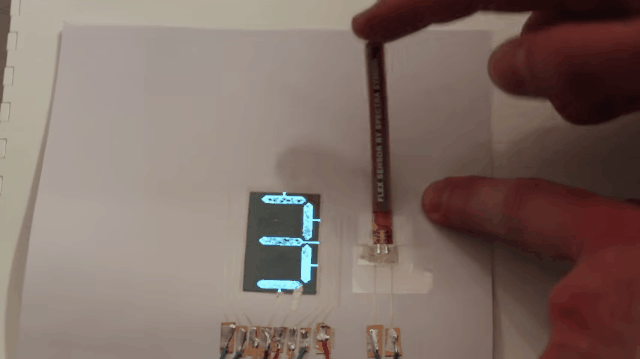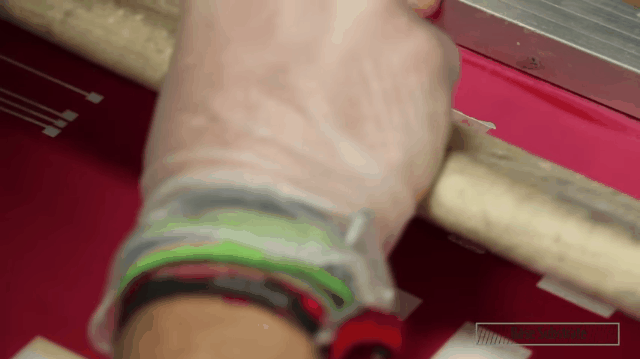We’ve kept a close eye on the 27th ACM Symposium on INTER Software and Technology, going on in Honolulu this week, given that it’s already produced dozens of fascinating prototypes — but this award-winning paper is perhaps the coolest we’ve seen.
It’s called PrintScreen, and it’s a system for printing displays on nearly any kind of material. Really, anything: Wood. Mylar. Marble. Leather. Metal. A piece of office paper. And what’s more, these super cheap, super fast displays are touch sensitive. They can be double-sided. You can roll them, smoosh them, fold them. And you could print them yourself.
Up until now, flexible displays — much less touch-sensitive ones — have required “high-end print lab, complex machinery and expert skills,” say the authors, pointing to OLED manufacturing as an example. Now, anyone with a little time and money can.
In the full paper, which just won the Best Paper Award at the symposium, the authors — Simon Olberding, Michael Wessely, and Jürgen Steimle — explain how it works. Normally, if you wanted to integrate a display into something you were building, you’d have to buy the full components, which of course look like this:

Instead, the trio explain, you could just design a simple circuit on your computer using any kind of image editor, from Photoshop to Pixlr. When you have your display set up as a vector file, you then print it using any number of conventional printing processes. You could use an inket printer. You could even screen print it.
What’s important is what ink you use — and in what order. The ink is applied in four layers, using materials you can buy very easily. First there’s the silver conductor, then a dielectric layer, a phosphor layer, and finally, a translucent conductor. Those two conductors sandwich the phosphor layer, which emits the light when a charge is run through the ink.

So what can you do with it? In their paper, the authors show off five prototypes. There’s a touch-sensitive watch strap:

Or a fake plant that acts as a way to answer phone calls. A tiny game of Pong. An interactive postcard. You could even integrate a display with other components to create a more advanced system:

These novel little concepts are just that — novel, one-off applications, a tiny glimpse of what’s possible. We’ve spent a lot of time wondering when flexible displays, cheap displays, or print-at-home displays would become a reality. In one fell swoop, these researchers have demonstrated all three in a single paper. [Embodied Interaction]
